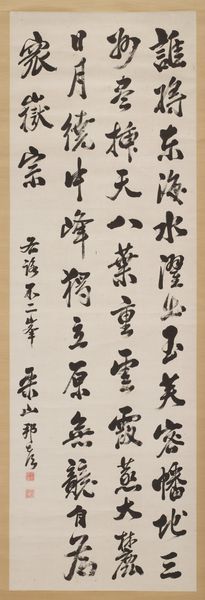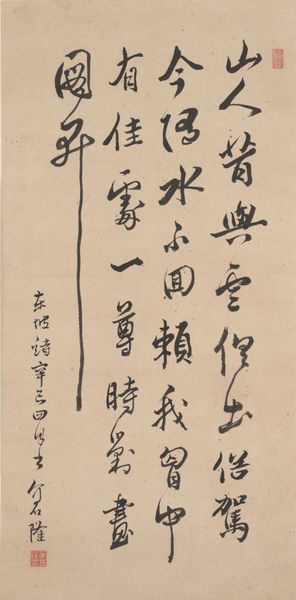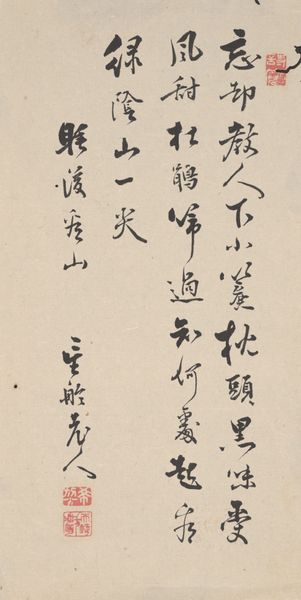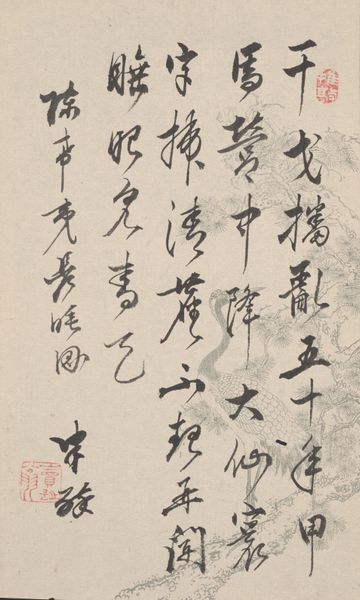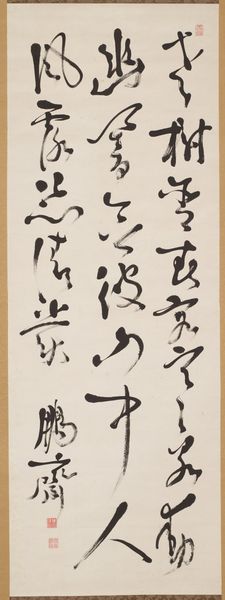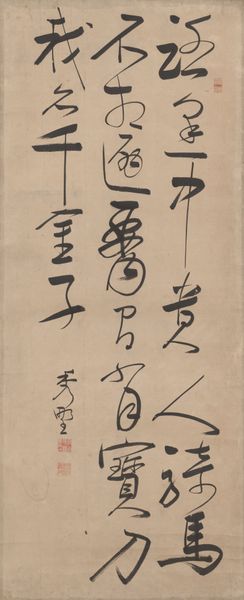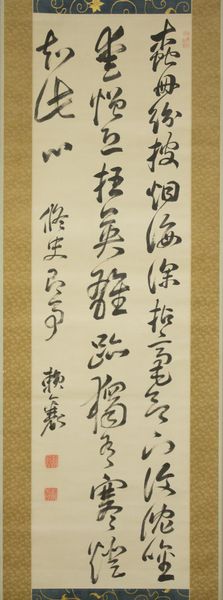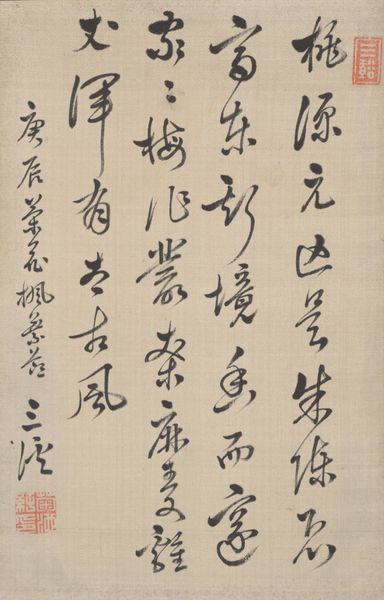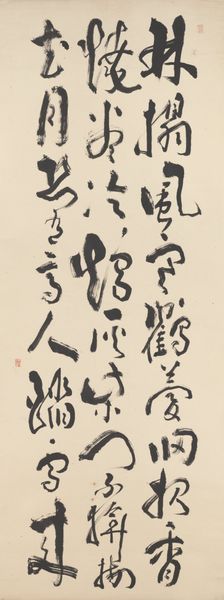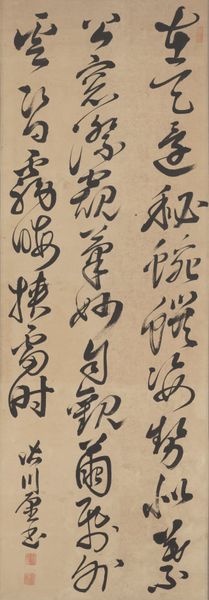
drawing, paper, ink-on-paper, hanging-scroll, ink
#
drawing
#
asian-art
#
japan
#
paper
#
ink-on-paper
#
hanging-scroll
#
ink
#
calligraphic
#
calligraphy
Dimensions: 48 5/8 × 20 1/2 in. (123.51 × 52.07 cm) (image)
Copyright: Public Domain
Editor: This is “Rain Over the Stream,” a 19th-century ink-on-paper drawing by Yanagawa Seigan, currently housed at the Minneapolis Institute of Art. The dynamic, fluid strokes create a visual rhythm that's really captivating. What catches your eye about this piece? Curator: Immediately, it's the interplay between the black ink and the white paper that commands attention. Consider the calligraphic lines themselves—how their varying thicknesses and pressures create a spatial dimension on a two-dimensional plane. Notice how the artist's use of empty space functions as a structural element, dictating how we interpret the composition. Do you see how each character exists both independently and in relation to others within the overall design? Editor: Yes, I do. It's almost like the negative space is as important as the ink itself, giving each character its own breath. So, how does one even begin to interpret something like this formally? Curator: We can start by observing the distribution of weight and density. The upper section, for example, displays a certain concentrated mass, contrasted by a sparser distribution below. Furthermore, look at the formal qualities inherent in individual strokes – sharp angles against gentle curves, dry brush versus saturated application. This creates an internal dialogue and offers, I think, insight into the artist’s intent and process. Editor: That's fascinating. So by focusing on the purely visual aspects – line, form, space – we can understand something profound about the artwork itself. It’s like deciphering a visual language, isn't it? Curator: Precisely. This careful orchestration of visual elements leads us to the core of its artistic expression. What a rewarding thing it is to focus on formal expression. Editor: I agree! I will look at calligraphy differently moving forward, paying close attention to how its parts interact to express a complete vision.
Comments
minneapolisinstituteofart almost 2 years ago
⋮
Thick, undulating brushstrokes crowd together on paper, some trailing off like the tail of a cloud. Written in cursive script, the sharp edges of characters turn into circles and curved lines. Unlike calligraphy in the standard style, the size and spacing of the characters changes spontaneously, creating a visual rhythm on the paper. Although written in four lines of varying lengths, the poem is a quatrain of seven characters each, a typical Chinese poetry format. Yanagawa was a well-known kanshi poet master and associated with figures like Fujita Tōko, whose rubbing is on display in this gallery.十年孤負水雲期満面黄沙両鬂絲手把琴絃心語口世間能有幾人知For ten years I have idled my time alone like floating clouds,On my face of yellow sand, both sideburns have turned tocotton.Holding my qin, I converse with my heart:In this world, who can know this feeling'(Trans. adapted from Stephen Addiss)
Join the conversation
Join millions of artists and users on Artera today and experience the ultimate creative platform.
